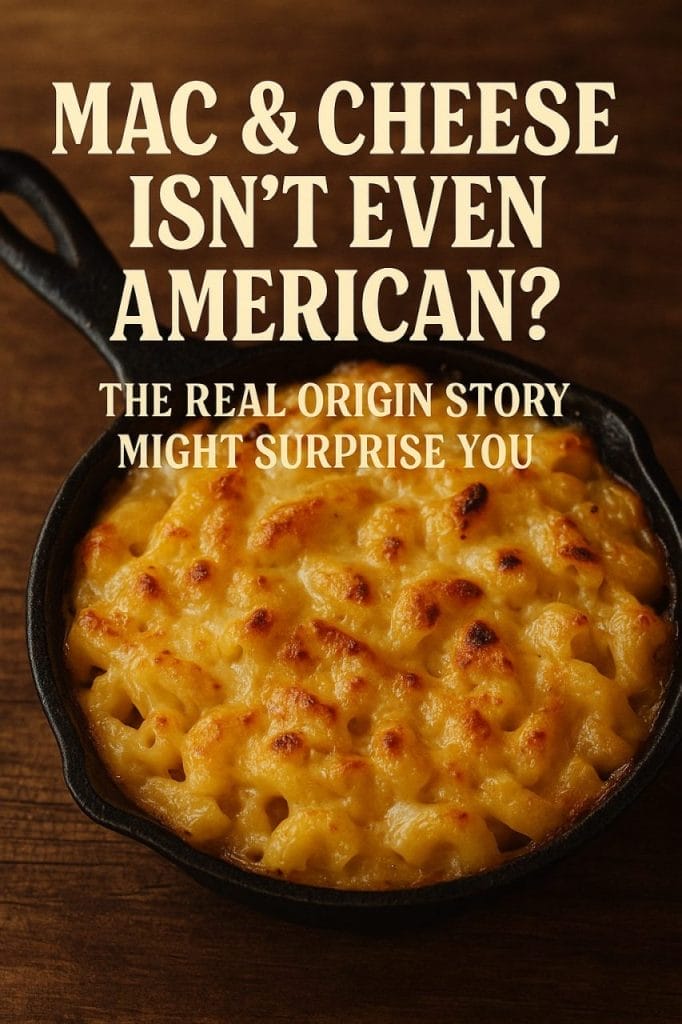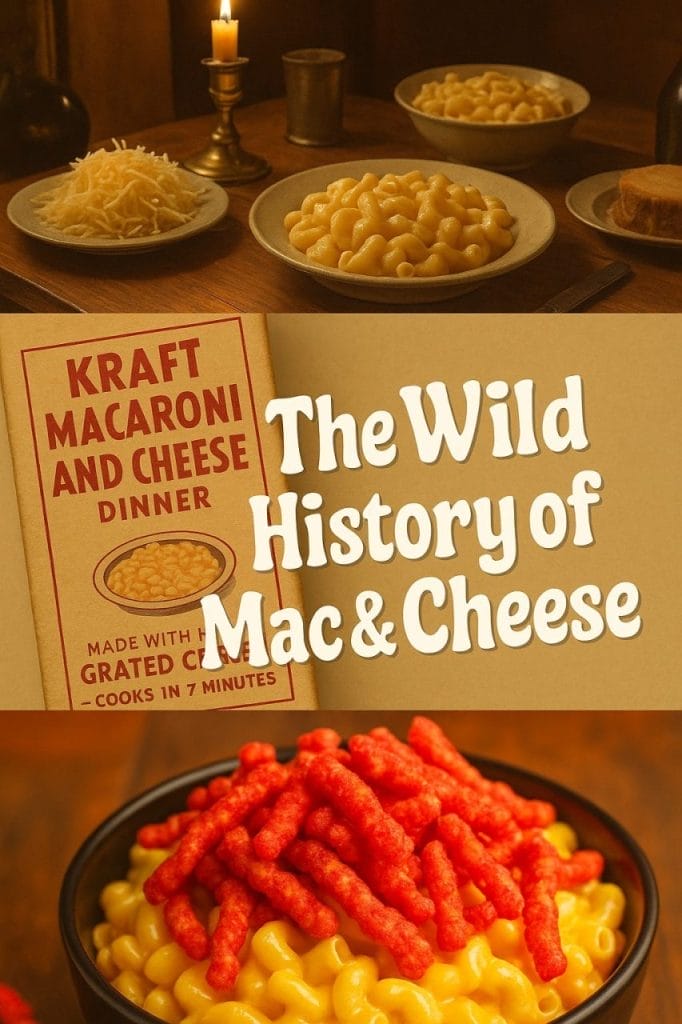I Made These FREE Vintage Recipe Tools JUST For You
This recipe was created with help from AI tools and carefully reviewed by a human. For more on how we use AI on this site, check out our Editorial Policy. Classic Fork earns a small commission from Amazon and other affiliate links at no extra cost to you, helping us keep our content free and honest.
How Did Mac and Cheese Become America’s Comfort Food?
There’s something about mac and cheese that feels like a warm hug. Whether it’s baked with a crispy top or scooped from a blue box, it’s the go-to for comfort, nostalgia, and carb-loading on a rough day.
But where did this cheesy noodle obsession actually begin? Is it really American at heart—or are we all eating a very distant cousin of something much older?

What Would You Cook in Wartime?
Step back in time and discover what you could make with limited wartime rations
The Earliest Known Roots
Mac and cheese might feel modern, but its roots go way back. Like really back. Historians trace early versions to 13th-century southern Italy, where a dish called “de lasanis” was made using sheets of fermented dough cut into squares and layered with cheese.
Over in medieval England, something called “makerouns” popped up—a baked dish of pasta and cheese mentioned in a cookbook from the 1390s. No cheddar, no creamy béchamel. Just boiled pasta layered with butter and cheese. That’s it.
The idea of pasta mixed with melted cheese was floating around Europe for centuries. But things didn’t really heat up until one key figure got involved.

Turning Point Moments
Thomas Jefferson is often blamed—or thanked—for bringing mac and cheese to American plates. During his time in France, he became a pasta enthusiast. He brought back a pasta machine, along with a taste for cheesy pasta dishes, and even served a version of mac and cheese at a state dinner in 1802.
But it wasn’t just Jefferson’s fancy dinner parties. The real shift came when people started writing it into cookbooks. In 1824, The Virginia Housewife by Mary Randolph included a recipe for macaroni and cheese. It was baked, buttery, and already starting to resemble today’s dish.
Later, during the Great Depression, mac and cheese became a survival tool. Kraft launched its boxed version in 1937, promising to feed a family of four for 19 cents. That little blue box kept people full through economic hardship and war.
It wasn’t just convenient—it was dependable. And cheesy.
The Modern Form Takes Over
Once boxed mac and cheese entered homes, it never left. It became a pantry staple. Kids grew up on it. College students depended on it. Midnight snackers worshipped it.
Then came the foodies.
In the 2000s, restaurants began crafting gourmet versions—think lobster mac, truffle mac, deep-fried mac. Suddenly, the humble dish became trendy. Fast food chains jumped in. TikTok started pumping out wild variations: Flamin’ Hot Cheetos mac, pumpkin spice mac, even mac and cheese ice cream (no comment).
We’d come a long way from grated parmesan over boiled dough.

So What’s “Authentic” Anyway?
Ask an Italian, and they might say this whole thing is a wild reinterpretation. Ask a Southerner, and they’ll point to baked versions with a golden crust as the real deal. Canadians? They have “Kraft Dinner,” which they take very seriously.
Truth is, everyone’s version is the “right” one… to them.
I grew up with the boxed stuff, doctored up with extra cheese and the occasional hot dog slice. A friend swears by her grandma’s slow-baked version that takes three hours and three kinds of cheese. Another won’t eat anything but the microwaveable cup. Who’s right?
Maybe “authentic” isn’t about ingredients. It’s about memory. Comfort. The version you reached for when you needed something familiar.
Myth-Busting Box:
Myth: Thomas Jefferson invented mac and cheese.
Reality: He didn’t invent it. He just helped bring it to America and popularized it. The concept had already been cooking in Europe for centuries.
So next time you dig into a bowl of mac and cheese—whether it’s baked, boxed, or sprinkled with bacon—just know you’re tasting a dish that’s traveled continents and centuries.
Did you grow up with a totally different version? Or do you swear by the blue box and nothing else?

